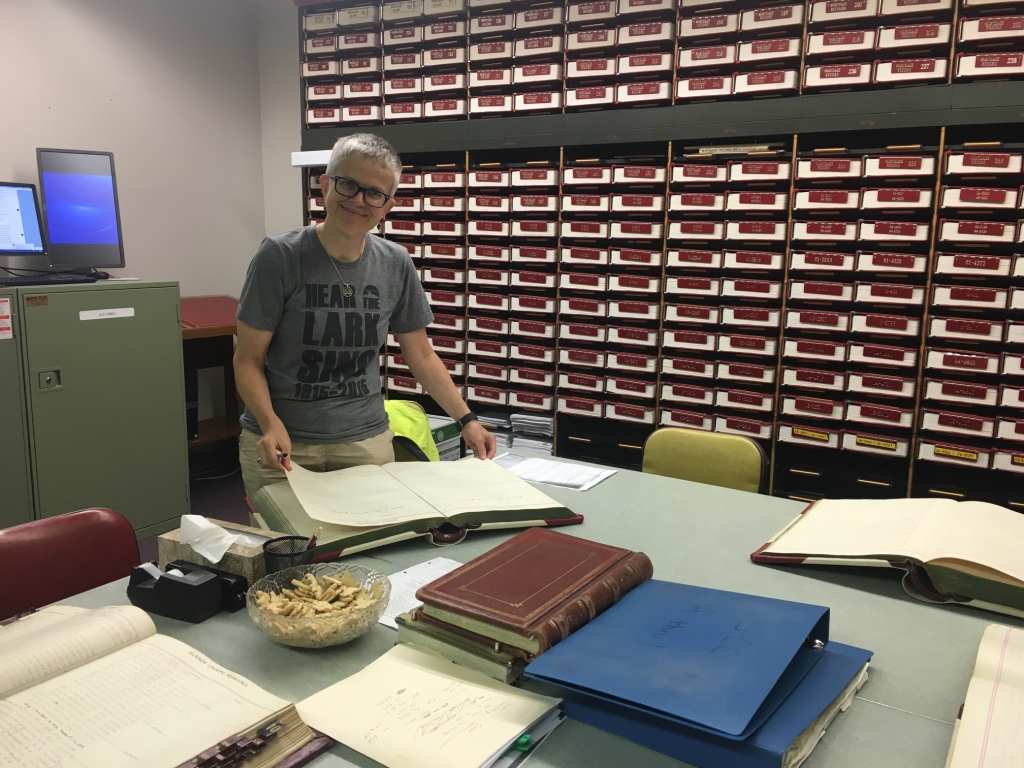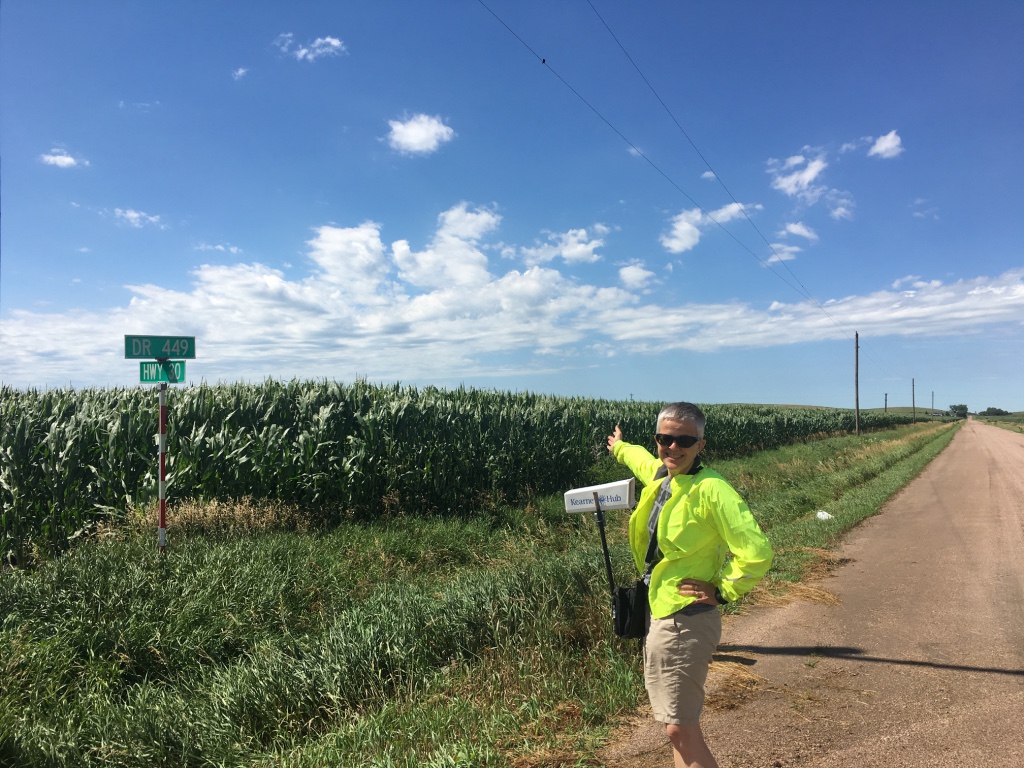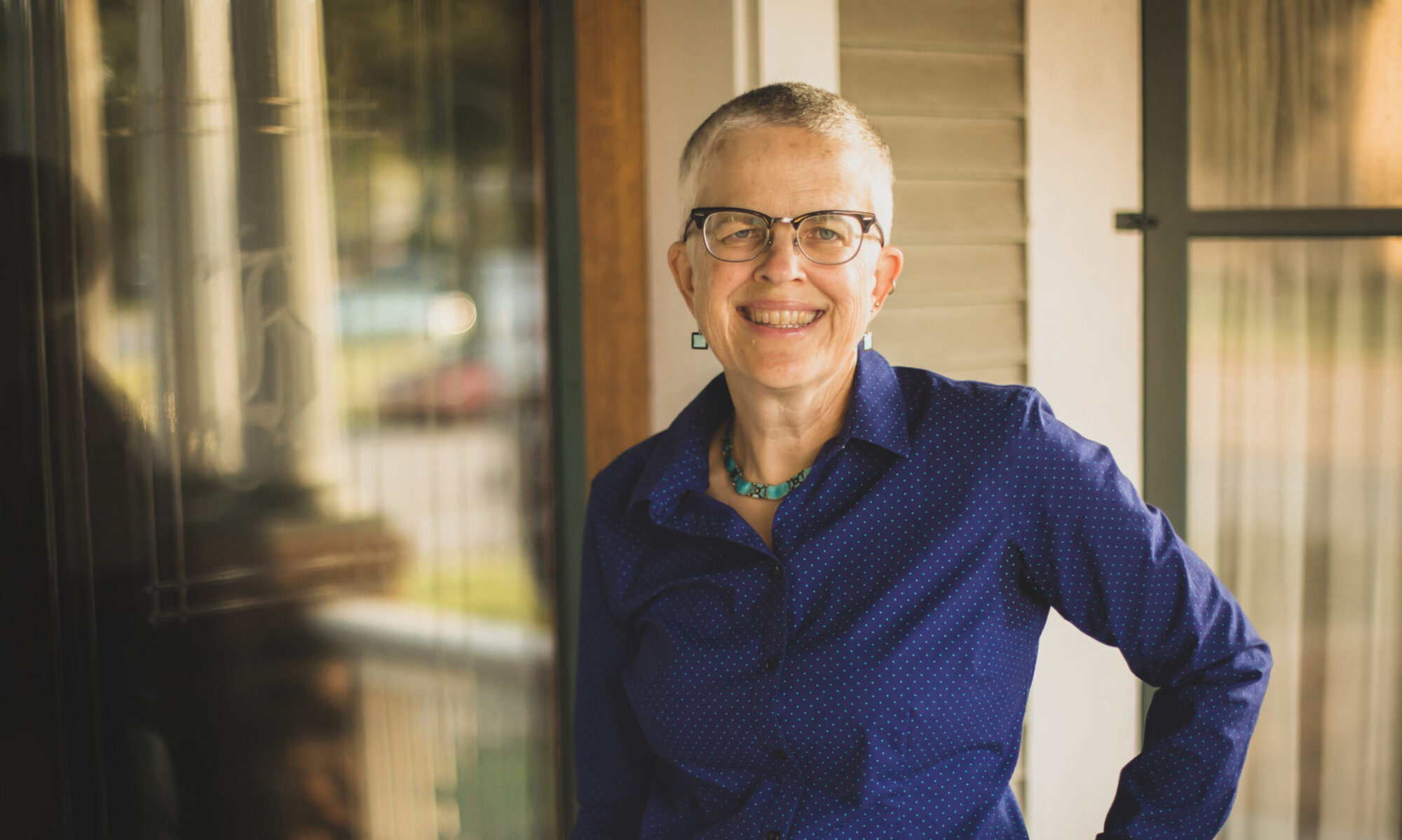Very early in my research, I ran across items in the Lincoln papers about Henry Lewis’s “ranch near Kearney,” and I found his name on a small fraction of a section near the town of Amherst in Buffalo County. I turned out to be very, very wrong, however, about both the location of the ranch and its place in the fortunes of the Lewis family in Nebraska.
My earliest research in Nebraska took place in the summer of 2004, when I was still teaching at the University of Oklahoma. Newspapers were not yet digitized, so I was working with microfilm and taking tips from others who had found mentions of the family in the papers. I found a mention a Lincoln newspaper from first decade of the twentieth century that Lewis family had a “ranch near Kearney” and also discovered that Henry Lewis was appointed the receiver of two banks in Kearney in 1894. I drove out to the Buffalo County Historical Society (Kearney is in Buffalo County), and a volunteer pulled out an atlas of the county from 1907 and located Henry Lewis in the index. There was H.E. Lewis named as the owner of a small fraction of a section of land near the small town of Amherst (he’s right about in the middle, the northeast corner of section 21; a section of land is 640 acres):

Well, there you go, the Lewis family ranch. I also knew from Henry Lewis’s Dartmouth College alumni file and from some Lewis family oral history that he was involved in an irrigation project somewhere in central Nebraska, and I presumed it was near this property. I published an article with an image of this atlas page, and thought myself quite clever. Once I moved to Nebraska, when I happened to be out near Kearney, I tried to drive as near as I could to this land, and I imagined Edith Lewis as an adolescent riding her horse over it’s rolling hills.
A few years later, when I happened to be in Kearney again, tried searching property records at the office of the Register of Deeds for Buffalo County. As with the Lewis family house in Lincoln, my goal was to confirm when Henry Lewis bought the ranch and when he sold it. The women who worked there were very helpful, and we found Henry Lewis’s name associated with many properties in Buffalo County, However, there was no record of his name on the property pictured above. It soon became clear that he held this property, and many other Buffalo County agricultural properties, only as a trustee in his role as bank receiver.
So where was Henry Lewis’s ranch? In the meantime, many Nebraska papers has been digitized, and I dove in. I soon discovered that Henry Lewis’s irrigation project was further west, in Elm Creek, which is in Dawson County, one county over from Buffalo County. I hunted up Henry in the Nebraska Secretary of State Records and found that he had incorporated the Farmers Union Ditch Company in 1896 and the Midland Alfalfa Company in 1905. Both specified that their business was carried out in Dawson County. I also found Henry Lewis’s name on an entire section of land in an early twentieth century Dawson County atlas (lower right, with the tracks running through it):

So it was time to travel to Dawson County to find out when he bought that section of land and when he sold it.
As with the story of the Lewis family house in Lincoln, it turned out to be a sad story rather than a triumphant one, and the two stories were intertwined. Henry Lewis had been spending most of his time out in Buffalo and Dawson counties since 1894, attending to his duties as bank receiver in Kearney and to the development and management of the Farmers Union Ditch Company, even though his family lived in Kearney with him for only a year. They lived in Lincoln, and he traveled back and forth on the train. In October 1901, while his daughter Edith was in her senior year at Smith College in Massachusetts, he entered into an installment contract for purchase of the section of land in Dawson County with Charles E. Perkins, president of the Burlington Railroad (Burlington tracks run diagonally across the northern third of the section). Here I am in the Dawson County Recorder of Deeds office in the summer of 2016 (unlike the Buffalo County office, which had digitized its records, Dawson County had not, so there were enormous ledger volumes on rollers and ladders to climb to retrieve them; Amber Harris, who helped me wrangle volumes, took this picture):

Almost immediately, Henry Lewis began a series of complex transactions that testified to the financial precarity of his interests in the land (read my blog post about the house in Lincoln for the ongoing collapse of finances there). In 1905, with some of his friends and associates in Lincoln, he incorporated the Midland Alfalfa Company, which financed operations (alfalfa cultivation and hog feeding) on his Dawson County ranch. His house of cards might have stood if not for the fact that a Dawson County roads crew repairing a bridge in June 1907 wrecked his irrigation ditch, and his income from it disappeared. This is the point in time where I earlier found evidence that I failed to understand–an item about the Lewis family returning to Lincoln after spending the summer “on their ranch near Kearney.” It turns out they were out there because Henry was fighting for his financial life, and he would soon loose.
In September 1908, a Lincoln widow who held the mortgage on the ranch filed suit against him, saying she was owed $9025. Soon, one of Henry’s Lincoln friends filed suit against the Midland Alfalfa Company and requested permission to feed the hogs on the ranch in order to preserve their value as they secured bonds the company had issued to him. In the midst of all this, Henry moved his wife and two youngest children, still living at home, out of the house in Lincoln and to a rented house in Kearney (rents were cheap after the burst of the speculative bubble in Kearney in the early 1890s). And in 1909, the Lewis family left Nebraska, unable to pay their massive debts on either their house or the Dawson County ranch and in the midst of lawsuits filed against them by men who had been Henry’s friends and fellow club members in Lincoln.
I have no evidence that Edith Lewis ever set foot on the Dawson County ranch, although I did (it’s in corn now rather than alfalfa):

I thought the Lewis family moved to New England in triumph, but they moved in desperation. Henry was in his early sixties, with two daughters still in high school, and he was starting over, trying to sell real estate in a community he did not know. Nevertheless, the failure of her family’s fortunes in Nebraska and their move to suburban Boston illuminates Edith Lewis’s life choices after she graduated from college, and especially the fact that she abandoned her dream of literary authorship. My book is about Edith Lewis’s relationship with Willa Cather, but Willa Cather did not dictate all of her life choices.
